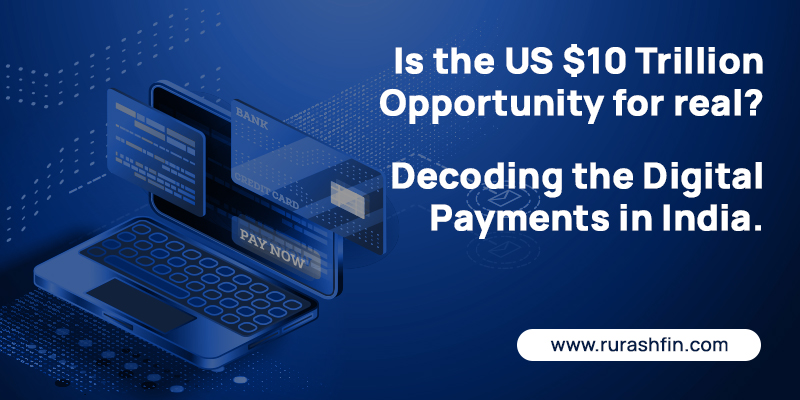Digital payments in India has been a revolution globally and are already a US$3 Trillion market, expected to grow to US$10 Trillion over the next 4 years. The $10 Trillion dollar milestone is essentially what BCG (Boston Consulting Group) and PhonePe have mentioned in their reports. There have been many inflections over India’s journey from 0 to US$3 Trillion in the last decade.
Talking about the report, Karthik Raghupathy – Head of Strategy and investor relations at PhonePe detailed out in a recent panel discussion, the key insights that reflect India’s digital economy directly, and how it is shared back to the community through PhonePe’s flagship geospatial platform in digital payments; PhonePe Pulse.
The report indicated that:
- 40% of total transactions now happen through non-cash cash or digital payment medium. This trend is expected to strongly continue
- In the coming years, Digital payments will surpass cash-based payments and by this trend, BCG estimates the US$3 Trillion Digital economy to grow 3X to US$10 Trillion in the coming years.
- Rapid change of consumer behavior, new entries in the merchant acceptance network, and innovations driven by FinTech and BigTech players have been the key driving trends in this growth
- IoT, embedded, 5G, Digital Rupee, and other future innovations will drive the adoption further
FY18 the transaction value of UPI was only Rs1.09 lakh crore and currently, we are at Rs 83.45 Lakh Crore.
The major drivers for this phenomenal growth include:
- A great collaboration between the banking and FinTech ecosystem.
- Better customer experience and merchant onboarding and awareness
- Banks are opening up to this four-party model.
- Technological growth, from a services Tech country we grow up as a product Tech country, creating a lot of tech expertise, creating CX based experience.
UPI is a great example of how public-private partnerships can create an incredible impact. Growth comes in three dimensions - Infrastructure investments: This ensures payment reliability happens at scale.
- Product Innovation: It is critical for companies to build easy-to-use UI and UX for their products to democratize and scale them to different cohorts, be it urban or rural.
- Public-private partnerships have enabled it at scale.
How can ONDC be a big digital movement?
- The next growth in digital payments will actually come in merchant payments and in that context ONDC will be quite important as it will bring multiple offline sellers onto digital platforms, which already is set in motion with Flipkart and Amazon, But to reach the next stage of evolution, ONDC will be quite supportive.
- ONDC could create a leveled playing field for not just merchants but also for small businesses and allow them to leverage this opportunity to become a part of the network to create business growth for them.
- Payment aggregators are quite bullish about ONDC revolutionizing commerce the same way UPI revolutionized Payments.
Key Challenges to digital payment adoption
- Consumer convenience and ubiquity: The challenge of ubiquity has been largely tackled by the expansion of QR codes. This is certainly going to become a game-changer in the coming future.
- Lack of high-speed data or internet, lack of security and lack of trust of consumers in the platform
We have to collectively work with both public and private bodies to overcome these challenges.
For many players, Lending digitization has been a quite popular use case as they have embedded finance into their payment journey now. This enables a more seamless finance and payments experience. Customers now can enable digital credit with a single click. This data can be used to better credit assessment and merchants who earlier had no access to credit can avail of credit facilities easily.
Next Big Milestones in UPI
- Autopay Mandate-based UPI Payments: micro ticket transactions that are repeated, like in cases of OTT streaming, micro insurances, etc.
- Geographically digital payments penetration has grown in all parts of India with higher penetration in southern India. Interestingly North Eastern regions are having high YoY growth rates.
- Categorically if we find significant growth on Merchant Access which is referred to as the P2M category, driven by rapid digital adoption by the offline merchants
- Demographically, the cohorts which earlier were slow in digital adoption have now picked up digital payments with ease. The Pandemic accelerated the adoption by a couple of years which earlier would have taken much more time.
All these trends and innovations bring up a critical issue of responsibility so that the consumer is able to get a recourse in situations of transaction not being completed successfully and the money being debited but the consumer not getting the product or service which was intended to be purchased, as this may lead to anxiety and the consumer might not go for a digital payment next time.
Trust and security are the core pillars on which the future of digital payments will be built and it will only drive the growth ahead. Private players are already focusing on security through various algorithms for detection of fraud and encryption of transactions along with focusing a larger part of this investment on hand holding the customer as well. There is also an infrastructural investment that would need support from both banks and payment aggregators so that the transactions and payments go through. It would be an understatement to say that investments in infrastructure, as well as trust and safety, will be critical in driving growth ahead, though this is even happening right now but it needs to continue with the same pace.
Western states such as Gujarat still have a cash-dominant economy because more or less most of the merchants rely on cash payments as they will have to pay to their suppliers in cash only. A lot of activities are being undertaken for large-scale digitization of the supply chain to improve the merchant’s and supplier’s access to digital payments. With the growth in B2B digital payments, we would see a growth in B2C digital payments as well. Thus both Consumer and Merchant payments go hand in hand and they both need to be digitized simultaneously to drive large-scale adoption of digital payments.
Rurash is fast exploring the possibilities of digital assets management and simplifying the fin-tech evolution through tech-enabled financial services. Digital payments will only add to the pace and further escalate wealth management and wealth creation.
We are offering a number of services ranging from private and unlisted equity to exclusive verticals like physical to Demat conversion for shares and loan against securities.

